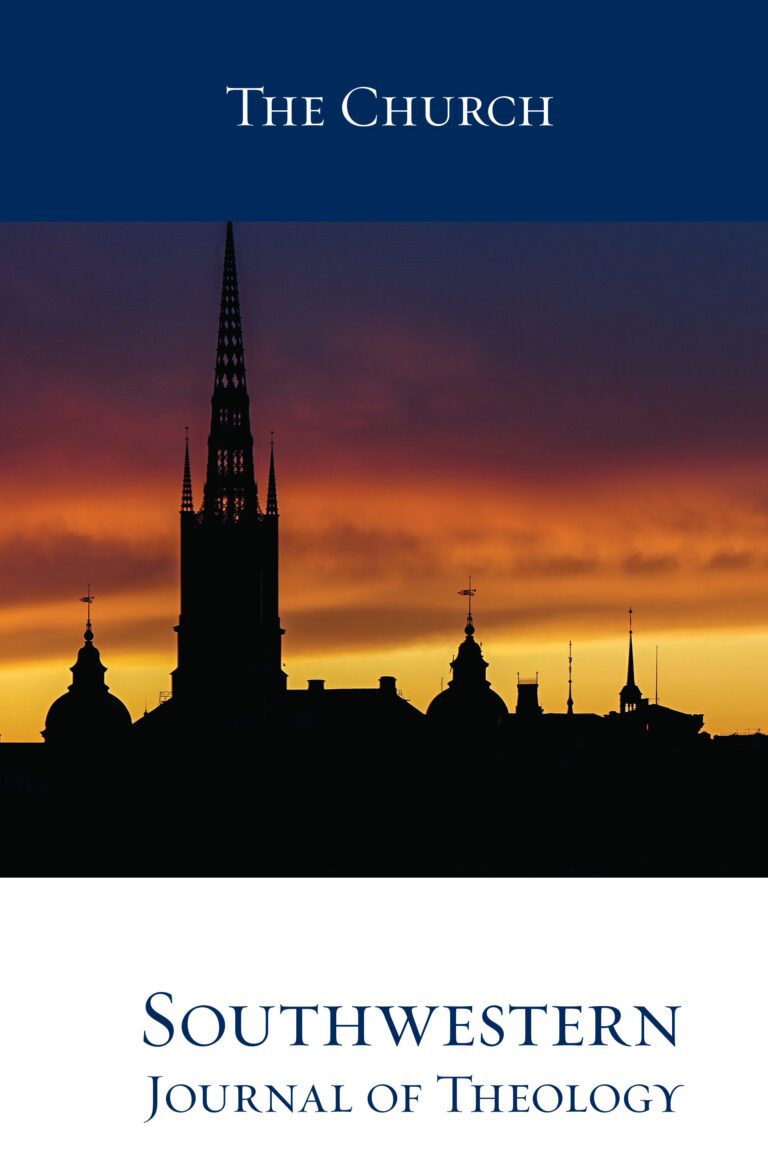
The Church
Southwestern Journal of Theology
Volume 61, No. 1 – Fall 2018
Editor: W. Madison Grace II
By John Holliday, Stroud, UK, Amberley, 2016, 305 pages. Hardcover, $32.95.
This biography of Walter Henry Medhurst (1796–1857) is written by one of his descendants. Medhurst was arguably the most influential missionary during a turbulent first half-century of Protestant mission in East Asia, and influenced other missionaries such as Karl Gützlaff, Hudson Taylor and David Livingstone.
The author provides excellent insights into Medhurst’s background and milieu. Illustrated color plates and the reduced price make it a highly desirable addition to institutional and personal libraries for readers interested in the history of Protestant Christianity in East Asia, including South-East Asia (Indonesia, Malaysia, Thailand), China, Japan, and Korea.
Seven chapters provide excellent information about the early life and upbringing of Medhurst and his wife. Born in London, Medhurst followed when his father became an innkeeper at Ross-On-Wye in 1803. He enrolled at the prestigious St. Paul’s School in London in 1807. In 1810 he moved to Gloucester, where he became a printer’s apprentice. He was converted through the influence of William Bishop at Southgate Street Independent (Congregationalist) Chapel, and responded to an advertisement of the Missionary Society in London to become an assistant to William Milne in Malacca. On the way he visited Madras, India, where he met and married Elizabeth Martin, a biracial English-Indian widow of a British officer with a son.
After arriving in Malacca in 1817, Medhurst received his theological training and ordination from his mentor Milne. He commenced mission work in Penang in 1819 and 1821 before he joined the faltering mission in Batavia ( Jakarta), Java in 1822. From there he conducted evangelistic work and tract distribution in the Chinese and Malay (Indonesian) languages, while operating a mission press, developing tracts, preparing a new Chinese New Testament translation and books on East Asian languages and geography. He conducted mission exploration trips to Java, the east coast of Malaya and southern Siam (Thailand), Borneo (Kalimantan), and Bali. If these activities were not enough, he was also pastor of the English community in Batavia, raising funds for a church building, now known as All Saints Anglican Church Jakarta, as well as organized the Parapattan Orphanage. These first two English institutions established in Indonesia exist until this day.
After the death of China Protestant mission pioneer Robert Morrison in 1834, Medhurst assumed leadership among Protestant China missionaries. In 1835 he undertook a mission trip along the coast of China. He then returned to England 1836–1838 where he promoted mission work to a new generation of missionaries. In 1843 he established with the medical missionary William Lockhart the first mission in Shanghai, where he continued his Bible translation work, made a visit to the interior of China, survived a local uprising and a mob attack, and made contacts with the Taiping Uprising.
Influenced by the social reform of early 19th century British Evangelicalism, Medhurst was opposed to slavery and to British participation in opium trade in East Asia.
Of course, much more could be written about Medhurst. Medhurst’s theological views and assistants William Young, Lukas Monton, and Choo Ti Lang were significant. Medhurst is an important and little-studied figure in the history of Christianity in Indonesia. Virtually all Protestant missionaries of his time, including Robert Morrison, two Americans who were martyred in Sumatra, and many other Dutch, German, British and American missionaries visited him on route to their postings in Indonesia and East Asia.
I am interested in Medhurst’s reception by Baptists. Medhurst provided necessary assistance to the English Baptist missionary Gottlob Brückner in Semarang to carry out the publication of the first Javanese New Testament and tracts, which in turn had an influence in the development of a Christian movement in East Java. Elizabeth Medhurst recommended her biracial pupil Rosemena (also known as Mecha) to the Baptist mission in Bangkok. Mecha eventually was appointed by the Second Baptist Church in Richmond, Virginia, as a missionary to women in Shanghai, China. Jehu Lewis Shuck, the most influential of the early Southern Baptist missionaries in China, was initially very grateful for receiving Medhurst’s 1838 revised Chinese New Testament. Shuck agreed with Medhurst on the need for medical missionaries. Shuck served on the Shanghai Delegates Bible Committee with Medhurst for a short time before Medhurst and other British missionaries withdrew to form their own committee. Shuck and other American missionaries preferred the Chinese term Shen for God which had been used by English Baptist missionary Joshua Marshman and the first Protestant China missionaries Morrison and Milne. However, the indigenous term Shangdi used for God by Medhurst was approved by English Baptist missionary Timothy Richard and by twentieth century Taiwan Baptist theologian Chow Lien-hwa. Since the late nineteenth century Chinese Christians have generally used the terms Shen and Shangdi interchangeably for God.





